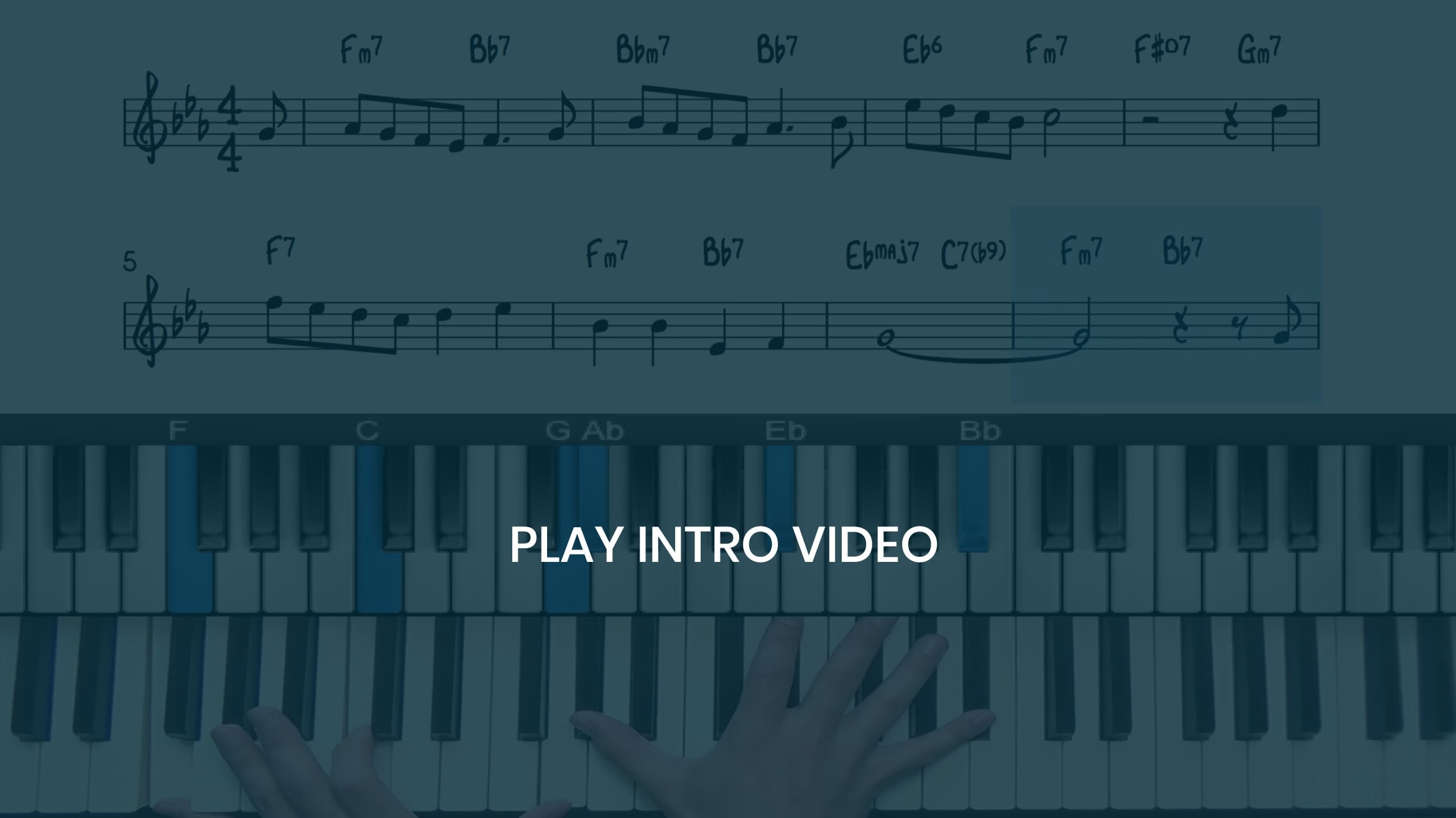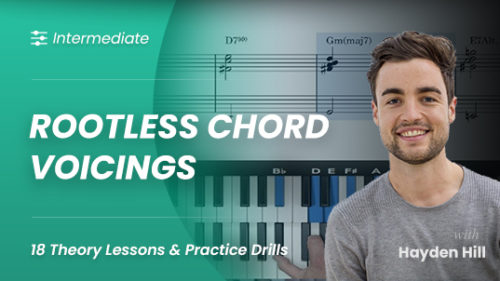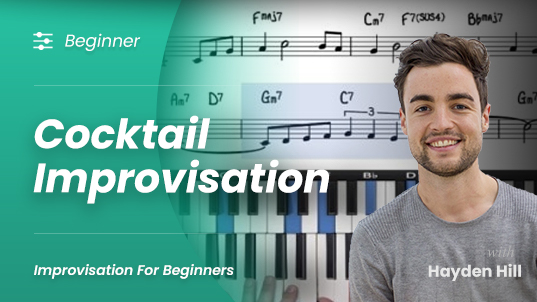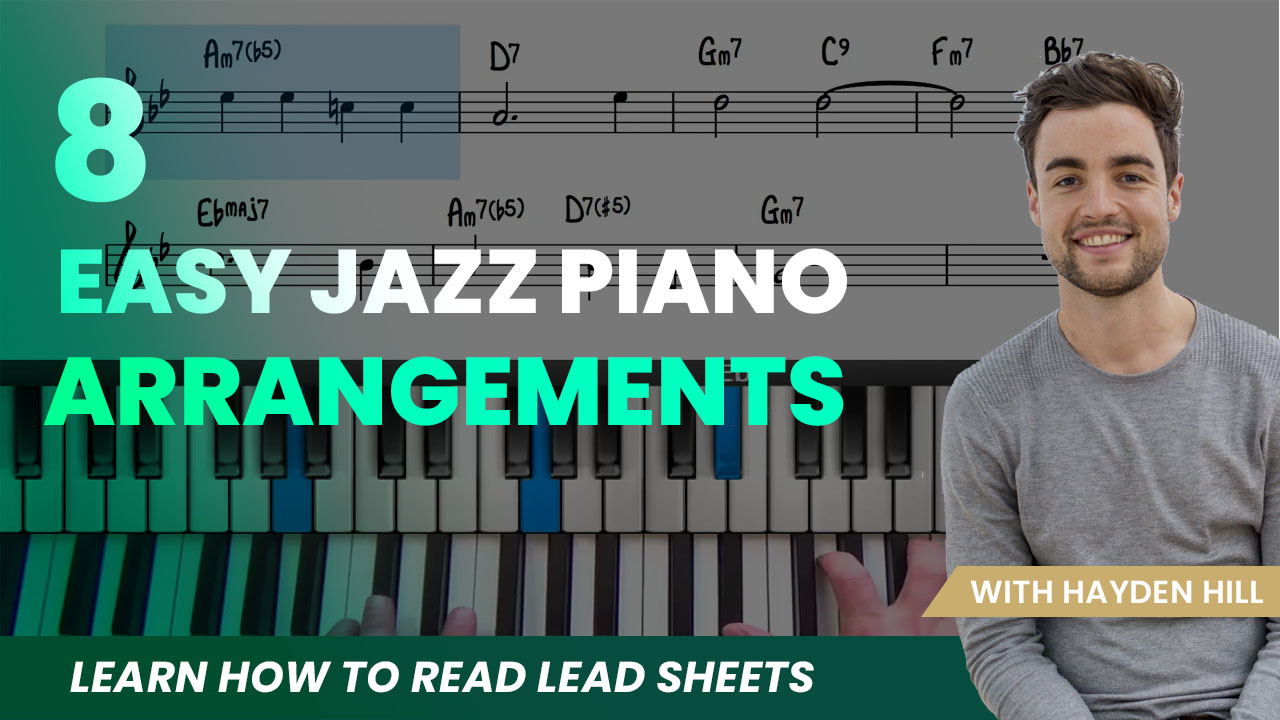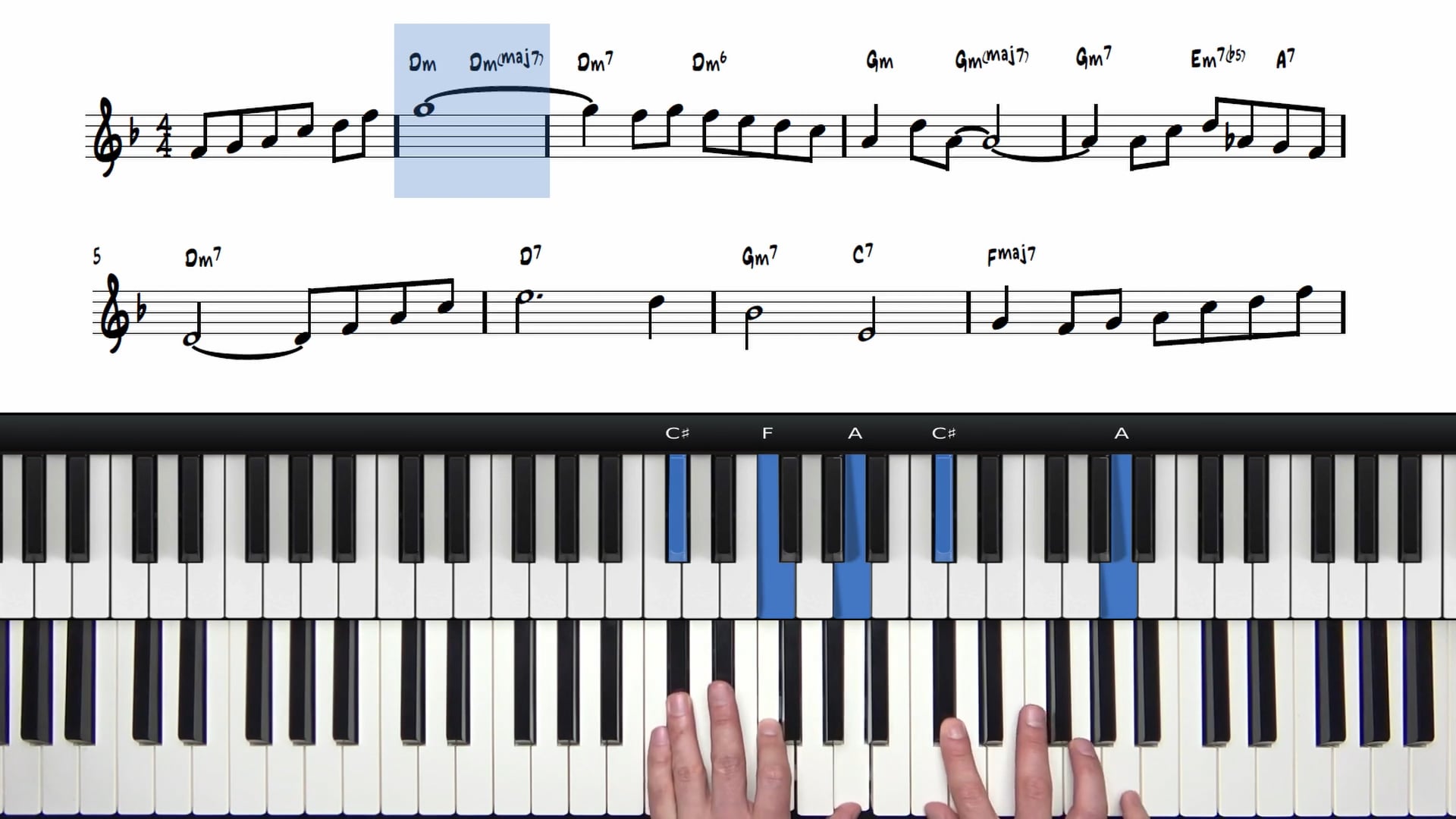Rootless Voicings Course
An in-depth study of rootless chord voicings; we create rootless 251 progressions in major and minor keys & apply to 3 well-know jazz standards.
to this course, right now!
Summary Information:
One-time purchase - learn at your own pace, with unlimited access to this course.
- Difficulty: Beginner
- View Online with Lifetime Access
- Video Slow Down Controls
- A/B Loop
- Theory Lessons
- Performances & Arrangements
- 24 PDF Files & Lesson Supplements
Rootless Voicings Course
An in-depth study of rootless chord voicings; we create rootless 251 progressions in major and minor keys & apply to 3 well-know jazz standards.
We start this course by exploring the concept of rootless chord voicings. Rootless voicings are used in an ensemble setting when a bass player is present but they are also very useful in a solo piano context.
Once you understand the construction of major, minor and dominant rootless voicings. You can then put these chords together to create the rootless major 251 progression .
We then look at the minor 251 progression which is more complex than major harmony. Just like the major 251, the minor 251 is very common and is present is most jazz standards. We explore the minor 251 in it’s most basic form and then also introduce an alternative way to play the progression, starting on the -11b5 chord.
It’s important to create an effective practice routine for 251 progressions. We discuss and demo an important piece of software – the iRealPro – and demonstrate how you can practice major 251s using this useful tool.
The final theory lesson in this course is on the minor line cliche which is one of the most common chord progressions in jazz. It’s important to understand how to navigate this important progression.
To finish this course, we apply the theory concepts to 4 famous jazz standards. We start with Duke Ellington’s “In A Sentimental Mood” which is a great tune to work on the minor line cliche.
Next up is a 2 part study of Johnny Green’s “Body & Soul” . We work on left hand voicings and demonstrate how useful these voicings can be.
‘My Funny Valentine’ by Victor Young is perhaps the most famous example of the minor line cliche and a nice tune for practicing minor harmony.
We then look at another number by Victor Young – “Beautiful Love”. Written in the key of D Minor, this is a great tune for practicing minor 251s in context of a jazz standard.
These jazz standard lessons also cover altered harmony and upper structure triads and so you should check out that course if you haven’t already.
The final jazz standard study is the beautiful tune “Have You Met Miss Jones” where we explore rootless voicings and a full solo piano arrangement.
To play a rootless voicing we leave out the root of the chord and play one of the upper extensions to get a richer, more colourful sound.
Rootless voicings sound more professional than root based 7th chords and they voice lead much more smoothly in a 251 progression.
Minor harmony is much more complex than major harmony and so the minor 251 progression takes much more time and patience to master.
251 progressions are essential components of the jazz language and so taking the time to memorise them will greatly benefit your playing.
In this lesson we explore how you can navigate over the minor line cliché using bass lines, two-handed chords and left hand voicings.
We will work on our recognition of major 9th, minor 9th, & dominant 13th rootless voicings using a left hand stride drill.
In this lesson we will create the major 251 progression with a left hand stride and rootless voicings exercise and drill.
One of the intricacies of minor harmony is the variety of colours and tensions we can add to the chords in the minor 251 progression.
Duke Ellington's 'In A Sentimental Mood' is one of the most recognisable jazz ballads. The tune is very accessible and a great for beginners.
We're introduce some bigger voicings and cover some interesting examples of altered harmony and upper structure triads.
The catchy melodic motives, complex chord progressions and unusual key changes make Body & Soul a favourite amongst most jazz musicians.
In this lesson, we explore extended and altered harmony, upper structure triads, and some interesting applications of diminished chords & harmony.
Beautiful Love is commonly played as both a ballad and as a medium to up-tempo tune. In this lesson we create an arrangement for both of these styles.
This tune has been recorded by many great jazz musicians such as Art Tatum, Hank Jones, Kenny Barron, and Chet Baker.
-
Rootless Major 251 Progressions – 12 Keys File Type: pdf
-
Minor 251 Notation – All 12 Keys File Type: pdf
-
Minor Chord Progressions Notation File Type: pdf
-
Rootless Voicings Practice Planner File Type: pdf
to this course, right now!
